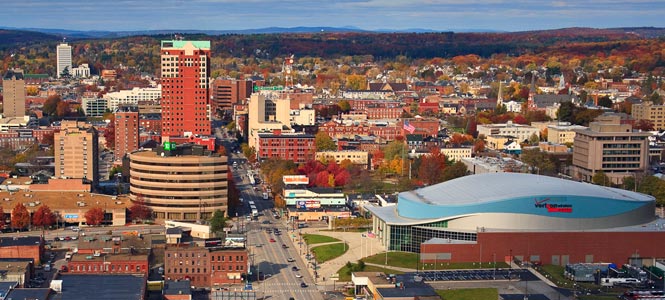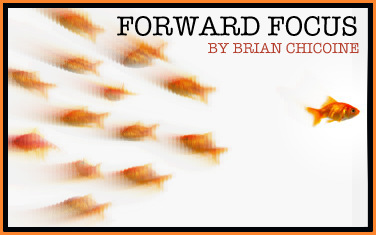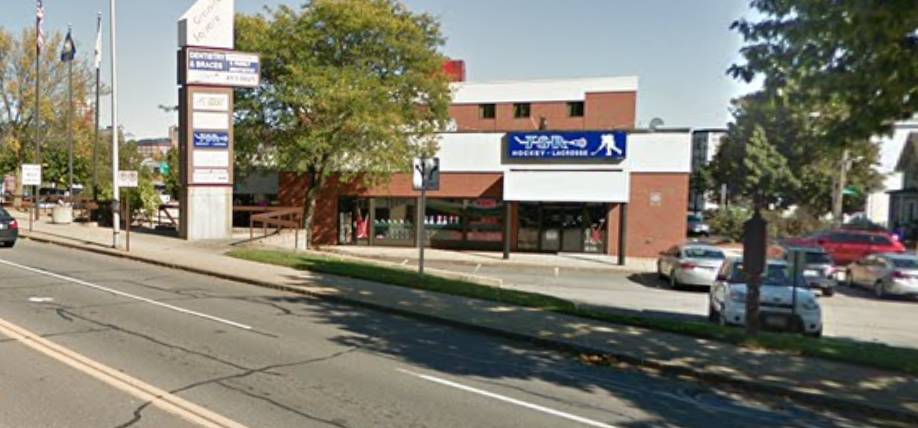
 Last year presented some major challenges. Although 2020 was a rough year, I learned some great lessons. Lessons that I have learned include how to pivot, how to quickly – and frequently – adapt, and most importantly, it strengthened my bond with my family as well as my love for our city.
Last year presented some major challenges. Although 2020 was a rough year, I learned some great lessons. Lessons that I have learned include how to pivot, how to quickly – and frequently – adapt, and most importantly, it strengthened my bond with my family as well as my love for our city.
Since the 2020 election, I have had the opportunity to spend more time with my family and to contemplate where we are as a city. I also took some time to think about things that would make Manchester an even better place.
I understand that we currently have some major issues in our city, (e.g., addiction and homelessness), but I am sharing this with the full understanding that along with realizing a vision, we need to solve problems. But as my nana always used to say, we need to be able to walk and chew gum at the same time.
I hope that these ideas start discussions that will lead to great things happening in our city. I believe that with the right partnerships, with citizen involvement, and with support and action from our elected officials, these ideas – and more – can become reality.
(Full disclosure that some of these ideas are ones that I have previously shared. I looked at these ideas and updated them).
 Crime
Crime
To better combat crime, we should divide our city into divisions and have a working police sub-station in each. These sub-stations would have full-time on-site personnel and could also be used as meeting areas for neighborhood crime watches. Having small, distinct districts would encourage community policing, which would both improve community-police relations and increase the police presence within the neighborhoods.
Housing
To overcome problems associated with absentee landlords, reduce blighted properties, and allow for truly affordable housing:
- Increase the number of inspectors who are in the field conducting inspections and responding to complaints. This may call for office restructuring, increased innovation, as well as funding, but is something that needs to be done to ensure that Manchester has safe housing stock.
- We need to find a system that will allow absentee landlords, (particularly those who reside out of state), to be held accountable for vacant and poorly-kept properties.
- Partner with organizations such as NeighborWorks to offer shared homeownership programs and access to low-interest loans for Manchester residents who want to buy and rehab local buildings for use as truly affordable housing.
- Arrange grants and resources for qualifying property owners to bring buildings to code.
BOSC and BMA Cooperation
One of the issues that often plagues Manchester Public Schools is that the Board of School Committee, (BOSC), and the Board of Mayor and Aldermen, (BMA), do not work well together (there often seems to be a power struggle, which undermines the purpose of doing what is best for the students). Citizen involvement can help resolve this issue. We need to demand that the two elected boards work together, and if not, we need to take action in the voting booth!
Neighborhoods
Enhancing neighborhoods and helping cultivate community relationships as well as community pride is an important factor in any city. Manchester needs to do everything it can to preserve the charm and “neighborhood” feel of sub-communities by creating a people-focused and business-friendly environment. As shown at mymanchesternh.com, there are 25 distinctive neighborhoods in Manchester. While we are all Manchester and should be proud of that, our neighborhood is our little section of the city and should be distinct, offering a little something for the locals, including shops, eateries, and events.
One idea to distinctly define our neighborhoods is erecting arches at the boundaries, such as the ones in Rimmon Heights on the West Side. Another idea that could be done in place of – or in conjunction with – the arches, are neighborhood-specific street signs that display the street name against a colored background with the neighborhood name. (The street signs that I am referring to have been done in Providence, RI. The signs not only designate the neighborhood but act as guidance to those who are not familiar with the area).
Gateways
We could create unique “gateways” to our fine city at all major borders, whether it be signage that displays pictures of Manchester points of interest or a sign with the city logo, we should have something that helps people know that they are in Manchester and that we are proud of our city! We could even have markers for things that are unique to Manchester. These markers could have lettering that read “Uniquely Manchester,” (or something to that effect).
 Getting Around
Getting Around
Getting around Manchester on foot and by bicycle is difficult. It is getting better but Manchester is still a car-dependent community. With some changes, the city could become a far better place for all modes of transportation. Any transportation options should be people-focused and concentrate on all modes of getting around.
The following are some other ideas:
- Elm Street should return to having parallel parking while still utilizing the payment system currently in place. Any lost parking can be replaced with space in existing garages, (especially since additional parking spaces became available after SNHU employees vacated city garages to park at their newly completed 1,700 space garage). This would allow the street to be widened and allow for a dedicated bike lane as well as future transportation options. Crosswalks could be slightly raised and made of brick in a color to match the architecture of the area as well as the character of the city. Cast iron arches could be erected at intersections and the current banner program would remain, adding to the vibrant look of the area. Streetlights could be replaced with high-efficiency lighting modeled to look like old-style streetlamps. Traffic signals could be programmed to allow for the safe and efficient flow of vehicular and pedestrian traffic as well as bicycles. In addition, the speed limit could be reduced to 25 mph. The new street design would start along Elm Street between Granite and Bridge Streets but could be extended.
- Public transit improvements could include the overhauling of the Manchester Transit Authority and investment of additional equipment and personnel. The goal could be to have a bus service that runs every 30 minutes during peak and every 45 minutes during non-peak times as well as on weekends and holidays. Service could run from 5 a.m. to midnight or later, ending at 11 p.m. on Sundays and holidays.Streetcars could be added to a citywide transportation fleet and could circulate within Downtown and the surrounding area. City busses could meet streetcars at local stations along the routes and carry passengers to the remainder of the city as well as areas of Hooksett, Auburn / Massabesic Lake area, Londonderry, (including the bus station in North Londonderry), Litchfield, Bedford, and Goffstown. A single-ride ticket could be good for continuous travel in one direction, (or in one zone), both by streetcar and bus. Transfers would be available to take another bus or streetcar within two hours of ticket purchase. This type of system would allow busses to serve a larger area as well as neighborhoods not currently served.
- The envisioned transportation hub in Downtown, (in conjunction with the “Capitol Corridor” rail and transit plan), would provide regional train and bus, streetcar, and taxi service. Services such as Zipcar and a bike-sharing program could also be available at “the hub.”
- Walkability, as well as Bikeability, would be improved by upgrading and maintaining sidewalks and crossings. And although dedicated bike lanes have been added in parts of the city, they could be designed to better protect cyclists by creating them next to sidewalks so that parked vehicles would offer protection and the cyclist is not riding in vehicular traffic, (similar to bike lanes in parts of Portsmouth). Adding more bike racks throughout the city would serve those who want to use bicycles as a mode of transportation and would also promote overall bike usage.
Bring back a canal!
The grandest undertaking that I am suggesting is the idea that the upper canal, which sits under Bedford Street, be unearthed.
Bringing the upper canal back would require a lot of work, but it can be done and would be a great asset for the city if done right. My idea is that the upper canal be unearthed and that it be used as a backdrop for events – and maybe boating events and races could be held in the canal. The beauty of the canal would also be a great addition to the magnificent, restored millyard.
A similar project has been done in Providence and has resulted in Waterplace Park, which hosts events such as Waterfire, and has also led to major improvements to the area.
Give us a sister!
To my surprise, Manchester, NH, is not a sister city of Manchester, UK. Manchester UK is the city that we were modeled after and we are her namesake so it is only fitting that we be sister cities. Having this relationship with Manchester, UK would benefit both cities in that we could share ideas and discuss issues. We could learn a lot from our big sister, (their population is around 530,000), and she could also learn from her little sister, (our population is around 112,000). We could learn about things such as blending historical buildings with new ones, maintaining infrastructure, and how to grow and maintain a great public transit system, and how to become more walkable and bikeable. We need to make this happen!
Some other ideas:
- Arms Park(ing Lot) should be redeveloped into a riverside urban park that can be used for theatrical productions, small festivals and outdoor concerts or events like ballroom dancing under the stars. Lost parking could be replaced by building an architecturally friendly garage next to one of the mills on the south end of the property. This would be a great addition to the area as Arms Park sits across from the new “Tru” hotel. The location is near Elm Street so could be “connected” via a specifically designed walking path.
- Veterans’ Park is a great example of the city returning a piece of property to its (almost) former state. Growing up, I remember a parking lot where the restored park now sits. I believe that Veterans’ Memorial Park, (official name), should be returned to its full former state, including unearthing the artificial pond that sits beneath it. The bathroom buildings could be restored and the welcome center could be redesigned to include an expanded history room that showcases some of downtown’s greatest treasures, including historical photos of the park as well as of Stanton Park and the area where the Center of New Hampshire now sits, (across from Veterans’).
The welcome center could also be connected via a decorative archway to another building on the opposite side of the park entrance. (The arch could bear the name of the park or the word “Amoskeag” on it). 
- Manchester Square would be a new designation and redevelopment of the area within the following boundaries: Elm Street at West Merrimack Street west to Canal Street; north to Stark Street; east to Elm Street; and south back to the starting intersection of West Merrimack. The Carpenter building and City Hall Plaza are both within this area. I would like to see the Middle Street parking lot, as well as the parking lot next to it, removed with lost parking replaced – and parking added – by constructing an architecturally friendly garage that would abut City Hall Plaza tower. The surrounding streets would be redesigned to match the architecture of the area. The area would remain mixed-use. The areas where the existing surface lots now sit would be made into a city square that hosts outdoor gatherings and could also act as a venue for theatrical productions, small concerts, and events like outdoor ballroom dancing.
- Granite Square was at one time a vibrant area that fell into neglect. A fire destroyed a major building in the square so it, along with other buildings in the square, was torn down and the area reconfigured to create the current version. My vision is to raze the existing plaza and replace it with mixed-use buildings constructed close to the street with wide sidewalks that would allow space for outdoor dining and shopping. The design of the buildings could replicate the original design. Parking would be situated in the rear of the buildings, (maybe via a small parking garage or parking deck). The intersection of Granite and Main Streets would be upgraded to allow for greater pedestrian and bicycle access. The current police sub-station would be replaced with a permanent location within the plaza. Sweeney Park would also be upgraded. The design would be reminiscent of the former Granite Square.
Conclusion
I realize that there are some big ideas here that would be very large projects but believe that they can be done if the city and the people are willing to commit to them. I believe that vision involves having large ideas and working towards them, (“think big / start small” is often the way). The projects would cost money, but I am confident that partnerships could be developed to minimize or eliminate any cost to the public. Some ways to finance projects include public-private partnerships, naming rights, grants, and individual support, as well as ways that I have not even thought of. I further believe that neither the people nor the city should shy away from ideas like these because there is a way if we are willing to find it.
I not only see and love Manchester for what it is, but also for what it can be! I hope that you will join the discussion.







